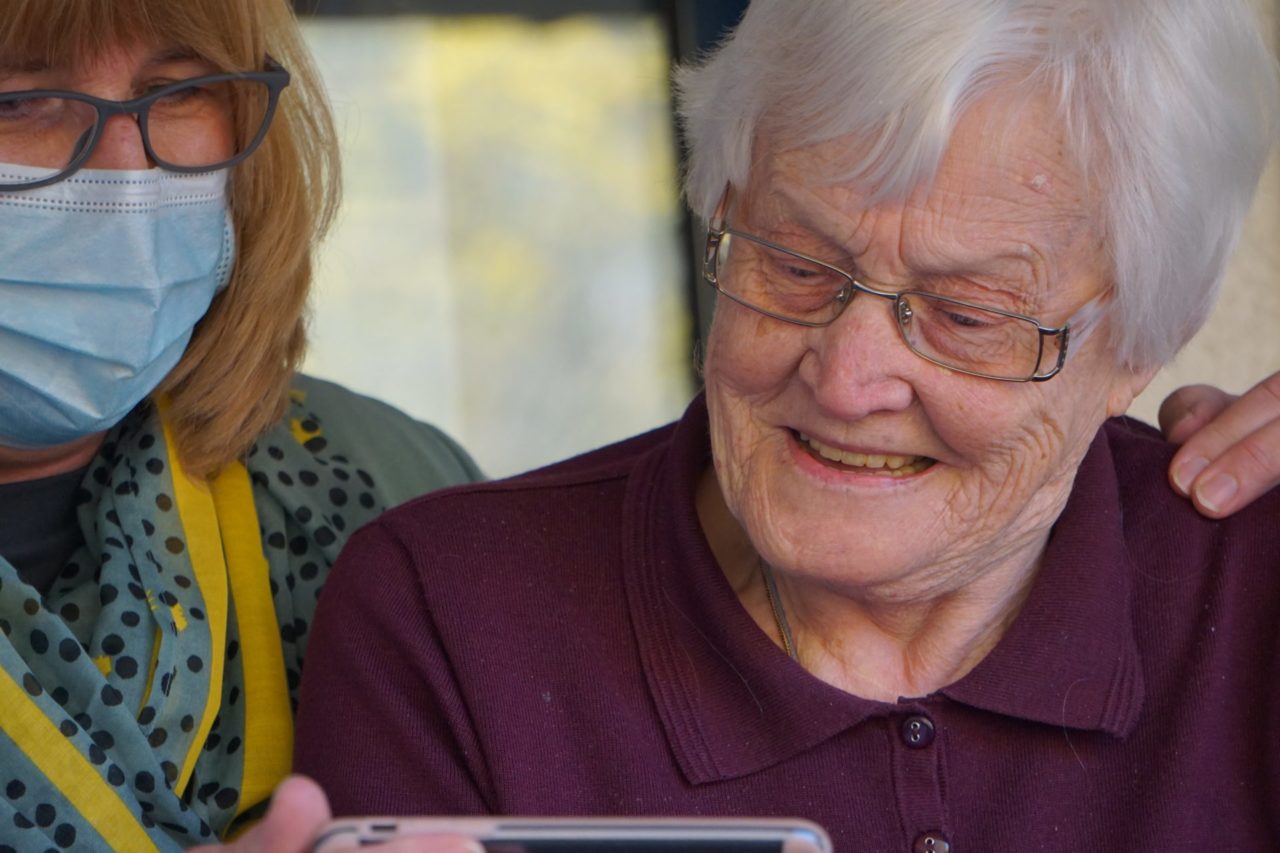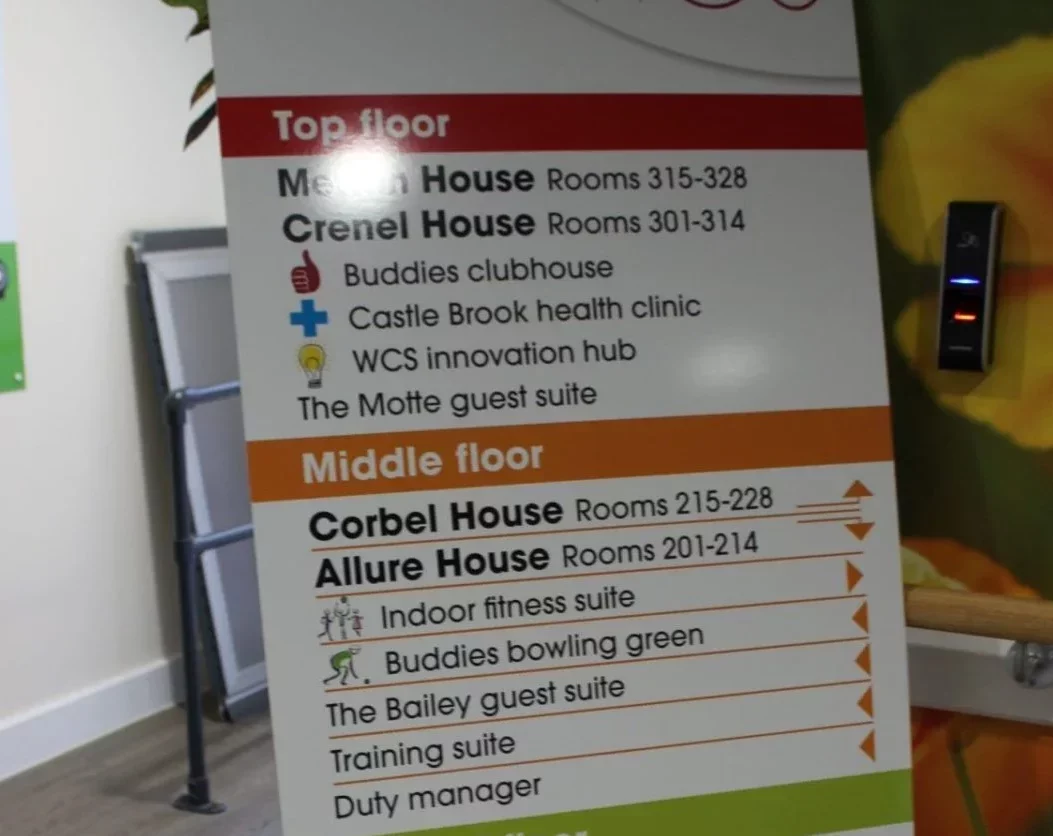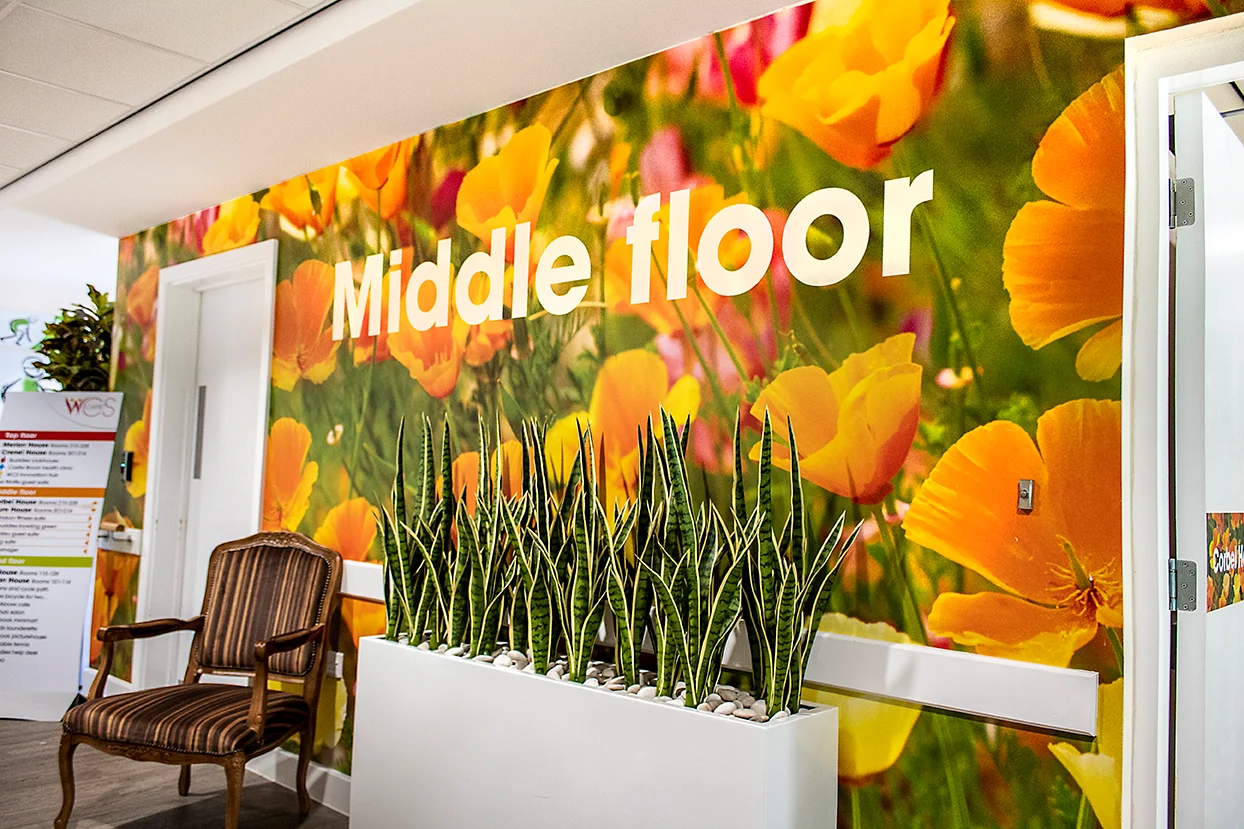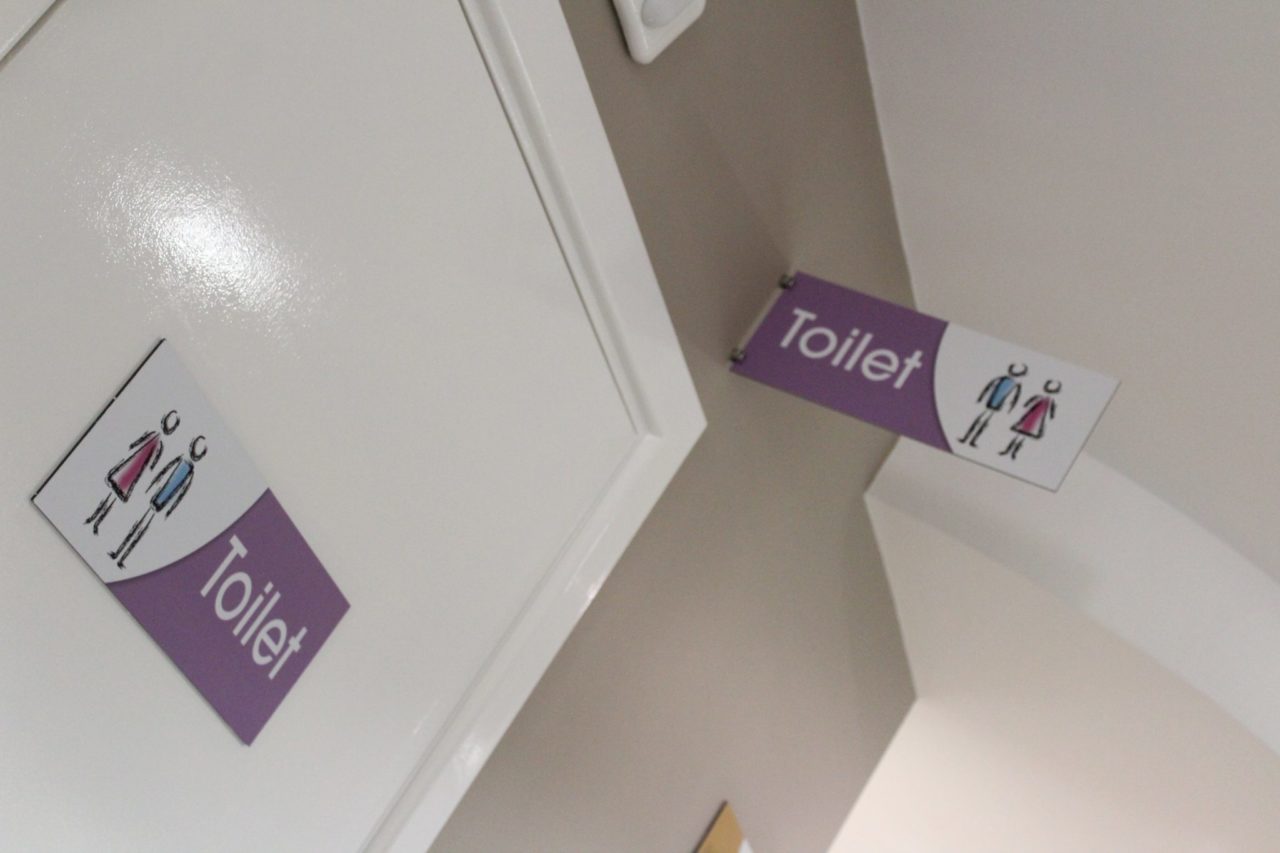The UK population is ageing. The gradual increases in life expectancy and average age seen during the 20th century is projected to continue in the coming decades. 70% of UK population growth between 2014 and 2039 will be in the over 60 age group, an increase from 14.9 to 21.9 million people.
Decades of a rapidly aging population has also led to increased dependence on health and social care, particularly comfortable dedicated care homes. When it comes to running a successful and supportive care home, environment is an important consideration.
“A well-designed built environment can maximise the physical mobility of older people, leading to increased activity levels, better health, and improved quality of life for a full range of users.”
The role of effective signage in Care Homes
Signage and branding can help to deliver an inclusive and relaxed care home environment, promoting independence and comfort for residents.
Wayfinding
The feeling of being lost is often cited as one of the major stresses for residents new to the care home environment.
People living in care homes, or with diminished memory function, are at a much higher risk of feeling lost if the environment is not adequately designed for their specific needs. Effective wayfinding signage helps residents to maintain a level of freedom and confidence.
Residents should be able to locate key areas around your care home easily and quickly, recognising and understanding specific spaces as they go.
Clear, engaging and highly visual signage can help individuals feel “at home” in their new environment and a feeling of independence knowing they can easily find their way around.
Clarity and age-appropriate signage
Perceiving, understanding, and remembering a sign can often be related more to the size, shape, and colour of the sign as its actual content.
The effective use of contrasting images, clear and appropriate pictures, alongside universally recognisable colours (think red = warning) can ensure that residents are likely understand the meaning of a sign, even if they aren’t necessarily able to fully decipher the text.
Uplifting imagery
The use of uplifting and instantly recognisable imagery can deliver a “home-from-home” experience that promotes the well-being and comfort of your care home.
Why not incorporate nostalgic imagery, local landmarks or bright natural images for a homely, familiar feel?
Considerations for dementia
Important for all care homes, but vital in dementia care, signage for people living with dementia or Alzheimer’s disease needs to incorporate a range of measures to communicate quickly and
effectively.
These considerations should include visual ‘cues’, colour and contrast theory, the relationship of text and imagery and even the positioning on the wall.
By considering these needs it is possible to provide valuable assistance in day-to-day living, giving
patients a greater sense of control and independence in safe and helpful way.
The Dementia Centre in ‘The Importance of Orientation and Signage’ says:
“Disorientation and bewilderment are a common experience for people with dementia and they are very distressing and frightening. The environment can be made more supportive and enabling with quite simple additions. The first is to make sure that what is important is highly visible.
There must be enough light and enough colour contrast to allow people to see properly. If it is a new building for people with dementia, it needs a very simple layout where you can see where you need to go without needing memory, learning, or reasoning.
Signs can be very helpful if they are clear, mounted low enough, have words and a picture and contrast with the background. Signs can be directional with a finger or arrow showing where to go or can be on the door of the room.”
It is abundantly clear that signage solutions are an important consideration for any care home environment and can be a significant contributing factor to the comfort and well-being of residents.
To understand more about how branding can be successfully used in a care setting check out our
WCS case study:
WCS Care provides specialist dementia, respite, and residential care with 12 homes across the Midlands. The result of our collaboration a stunning and vibrant environment which is enjoyed by residents and staff alike. The interior spaces throughout the state-of-the-art building are enhanced by highly colourful and carefully themed graphics and murals.
The custom-designed directional signage, eye-catching wall graphics and innovative visual aids
provided by Graphic Arts Group have been developed to help care homes deliver a comfortable, compassionate environment that helps residents feel ‘at home’ and can improve the independence of
daily living for all.
If you’re interested in finding out more about how signage and branding can support your care home,
please speak to one of our experts today.





